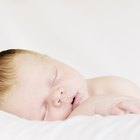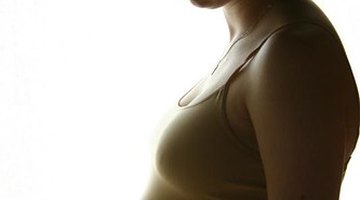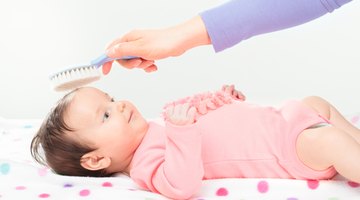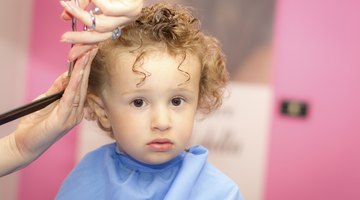Hair Growth in An African-American Babies
With so much attention paid to hair's appearance and growth, it’s sometimes difficult to remember that hair serves a function. Hair protects the head from injury and insulates the body, explains Jena Renee Williams, author of “Kinki Kreations: A Parent’s Guide to Natural Black Hair Care for Kids.” Your baby’s hair is very delicate, so handling it with extreme care and tenderness will help it to do its job -- and grow.
Volume can Vary
Some babies are born with lots of hair while others may have very little hair, states Williams. During infancy, the follicles are still developing and hair grows in gradually. African-American babies with hair may also have bald or thin patches of hair at the back of the head or around the sides; this is normal.
Don‘t Generalize Growth

When Does Hair Growth Start in Babies?
Learn More
While it’s a common perception that African-American hair grows slowly, this is a generalization. Genetics is the main factor in determining how quickly your baby’s hair will grow. As Williams points out, some babies' hair will grow in very quickly, while others won’t. The top of the hair grows fastest, but eventually all the hair will grow in.
Typs of Texture
Between birth and 4 years old, your baby’s hair texture can change considerably, states Deborah R. Lilly, author of “Wavy, Curly, Kinky: The African-American Child’s Hair Care Guide.” Initially, her hair is silky, straight or curly and very soft, but it can become coarser. African-American children’s final hair texture can be tightly curled or kinky, loosely curly, ringlets or wavy. Natural hair texture is determined by genetics.
Caring for Baby‘s Hair

How to Get Lint Out of Black Toddler Hair
Learn More
How you groom your baby’s hair can affect its growth. There’s no need to wash your baby’s hair every day -- every five to seven days is fine. Use just a small amount of a baby shampoo formulated for African-American children and use your fingertips --not your nails -- to gently massage the shampoo into your baby’s scalp, recommends Lilly. For simplicity, wash hair during bath time. Rinse out the shampoo completely with lukewarm water and avoid letting soap get in his eyes.
Caring for Common Issues
A common scalp condition in babies, cradle cap causes crusty white, yellow or red patches on the scalp. It’s a form of seborrheic dermatitis that isn’t likely to cause your baby discomfort or itching, according to the American Academy of Pediatrics. However, don’t be tempted to pick the scalp or scratch it to remove the flakes, as this can damage your baby’s scalp and hair follicles. Williams recommends applying olive or baby oil to loosen the flakes before you shampoo.
Related Articles
- Kinki Kreations: A Parent’s Guide to Natural Black Hair Care for Kids; Jena Renee Williams; 2004
- Wavy, Curly, Kinky: The African-American Child’s Hair Care Guide; Deborah R. Lilly; 2006
- American Academy of Pediatrics: Cradle Cap
- It's All Good Hair: Guide to Styling and Grooming Black Children's Hair; Michele N-k Collison: 2002











